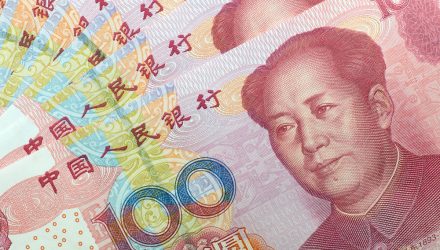China’s economic activity for May was down for its third straight month but is finally showing signs of slowing, reported the Wall Street Journal. With Shanghai set to begin the reopening process this week after more than two months of COVID-19 shutdowns and a rash of monetary measures aimed to add stimulus to the beleaguered economy, China is hoping to round the corner and begin recovery in earnest.
The manufacturing purchasing managers index in China beat expectations in May, coming in at 49.6, a growth from April’s 47.4, the lowest since the onset of the pandemic. Services and construction also grew in May, hitting 47.8, a sharp recovery from April’s 41.9. For reference, above 50 in these particular indexes reflects economic growth, signaling that while recovery is happening, it could be a bumpy road.
In Shanghai, public transport is set to resume on Wednesday, as is the reopening of shops at limited capacities, but restaurants will remain closed, and areas that have had COVID-19 in the last 14 days will remain in lockdown, according to the Financial Times. Elsewhere in China, Beijing and Tianjin are under restrictions, but they are markedly less extensive than those enacted in Shanghai.
Last Wednesday, Chinese Premier Li Keqiang conducted a meeting with officials nationwide where he recognized that the economic impacts from lockdowns were greater now than they were at onset of the pandemic in 2020. Of note, Premier Li called for state-owned companies as well as local governments to take active measures to stabilize economic growth.
Local as well as national governments alongside the central bank have announced a wide range of measures aimed to add stimulus; these measures include low mortgages for first-time home buyers, subsidies for the purchase of electric cars and laptops, and loans for small business and airlines. Beijing specifically is looking to spend large on expanding its infrastructure, with local governments issuing 1.85 trillion RMB (approximately $278 billion USD) as of May 27 in special-purpose bonds.
Concerns of future COVID-19 lockdowns continue to weigh on foreign investment and sentiment regarding China.
“The real turning point will be marked by a shift in China’s stance on its zero Covid strategy,” said Ting Lu, chief China economist at Nomura in Hong Kong.
Investing in China Without Delisting Risk
For investors who are looking for exposure to China but wish to gain it without the threat of delisting on the U.S. side, investing in China’s A-shares market could be one option to consider. The A-shares market has historically only been available to Chinese residents and consists of mainland Chinese companies that trade on the two local Chinese exchanges: the Shenzhen Stock Exchange and the Shanghai Stock Exchange.
The KraneShares Bosera MSCI China A Share ETF (KBA) invests in Chinese A-shares — specifically those from the MSCI China A 50 Connect Index.
This fund seeks to capture 50 large-cap companies that have the most liquidity and are listed on the Stock Connect while also offering risk management through the futures contracts for eligible A-shares listed on the Stock Connect. The index utilizes a balanced sector weight methodology to give exposure to the breadth of the Chinese economy.
Holdings in KBA include Kweichow Moutai, a major alcohol producer in China, at 8.04%; Contemporary Amperex Technology, a Chinese battery manufacturer, at 7.08%; and Longi Green Energy Technology Co., a solar energy technology company, at 5.96%.
KBA carries an expense ratio of 0.56% with fee waivers that expire on August 1, 2022.
For more news, information, and strategy, visit the China Insights Channel.

